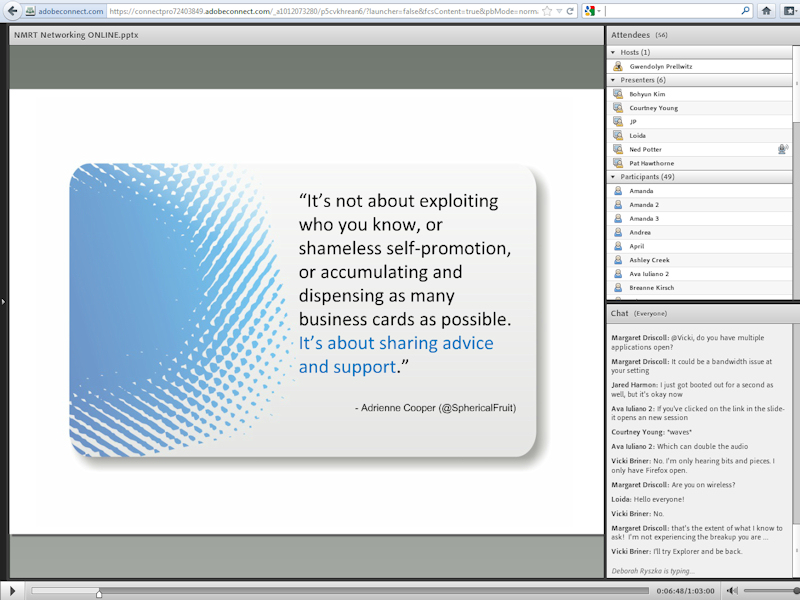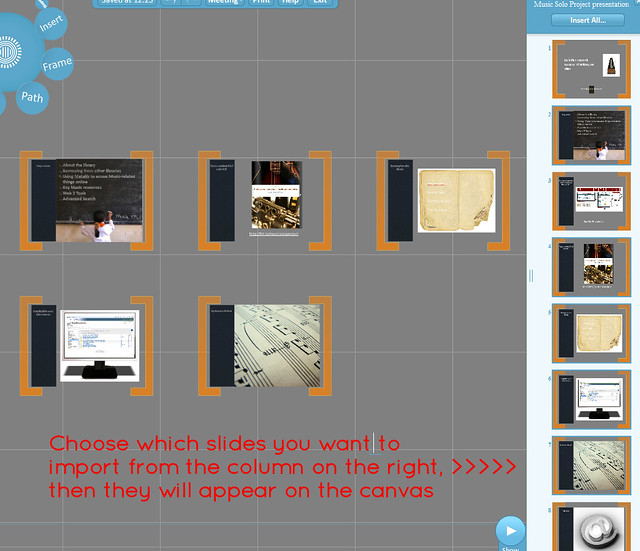I was really pleased to take part in the Annual programme for the ALA's New Members Round Table, last week - it was a webinar and the whole thing was recorded. You can watch and listen to it online here (it opens in Adobe Connect) - I talk about the 'What' of networking (starting around the five-and-half-minute mark) and finish things off with the 'Why' (around 42 minutes) - in between the How, Who, Where and When are covered by Loida Garcia-Febo, Courtney Young, JP Pocaro and Pat Hawthorne respectively.

Huge thanks to Bohyun Kim for inviting me to present - it was nice to take advantage of the technology to do something with the ALA without having to be at the conference in the US, and I enjoyed the webinar a lot. Appropriately, I made a few connections at the event and found it to be good networking experience.
Being forced to define networking for the purposes of the talk, and take a step back and look at what it means and involves, was a revealing experience, in particular because it made me realise how much of what I think about having a brand can apply to networking. In particular:
- Networking, like developing a brand, is a means to an end and that end is opportunities to do interesting or fun things - you meet and connect with people who expand your horizons, expose you to new ideas, and collaborate with you to do cool stuff. (Unlike brand networking is also an end in itself - it's just fun to talk to nice people.)
- If developing a brand is a natural byproduct of pursuing your professional interests in as networked a way as possible, then developing a network is a natural byproduct of the same thing, really.
- Related to the above: in my experience it's easiest to develop a network by positioning yourself as part of the dialogue in librarianship and contributing, than for example saying 'I'm going to make X connections' and actually setting out specifically to develop a network or market yourself .
I find my network (essentially: you lot) to be THE single most useful thing in my professional life, and in the webinar I reflected on a clear delineation (marked by the 2009 New Professionals Conference) of pre-networked-Ned and networked-Ned - all the interesting things have happened in the latter period. I could neither have written my book nor got my current job without my network. So a: thank you! And b: if you're wondering about taking the plunge and networking more, it's worth it. Becoming part of something bigger is a great thing.
- thewikiman








